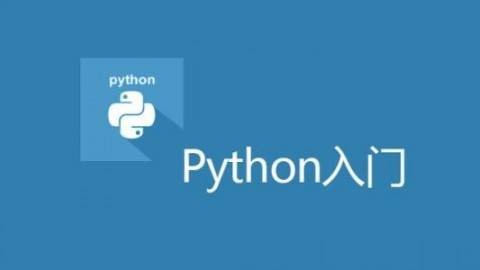
编写qsbk_spider.py爬虫文件
# -*- coding: utf-8 -*- import scrapy from qsbk.items import QsbkItem from scrapy.http.response.html import HtmlResponse from scrapy.selector.unified import SelectorList class QsbkSpiderSpider(scrapy.Spider): name = 'qsbk_spider' allowed_domains = ['qiushibaike.com'] start_urls = ['https://www.qiushibaike.com/text/'] def parse(self, response): duanzidiv=response.xpath("//div[@id='content-left']/div") for duanzidivs in duanzidiv: author=duanzidivs.xpath(".//h2/text()").get().strip() content=duanzidivs.xpath(".//div[@class='content']//text()").getall() content="".join(content).strip() #调用pipelines文件,存取数据到json文件里面 # duanzi={"author":author,"content":content} item=QsbkItem(author=author,content=content) yield item
编写items.py文件
# -*- coding: utf-8 -*- # Define here the models for your scraped items # # See documentation in: # https://doc.scrapy.org/en/latest/topics/items.html import scrapy class QsbkItem(scrapy.Item): # define the fields for your item here like: # name = scrapy.Field() author=scrapy.Field() content=scrapy.Field()
编写pipelines.py文件保存数据到duanzi.json文件里
# -*- coding: utf-8 -*- # Define your item pipelines here # # Don't forget to add your pipeline to the ITEM_PIPELINES setting # See: https://doc.scrapy.org/en/latest/topics/item-pipeline.html import json class QsbkPipeline(object): def __init__(self): self.fp=open("duanzi.json",'w',encoding='utf-8') def open_spider(self,spider): print("爬虫开始了...") def process_item(self, item, spider): item_json=json.dumps(dict(item),ensure_ascii=False) self.fp.write(item_json+'n') return item def close_spider(self,spider): self.fp.close() print("爬虫结束了...")
编写start.py爬虫启动文件
# -*- coding:utf-8 -*- #作者: baikai #创建时间: 2018/12/14 9:16 #文件: start.py #IDE: PyCharm from scrapy import cmdline # cmdline.execute("scrapy crawl shuju_spider".split()) cmdline.execute(["scrapy","crawl","qsbk_spider"])
设置settings.py文件相关配置



运行start.py文件爬取网站数据并保存到duanzi.json文件里
# Scrapy笔记 ## 安装scrapy框架: 1. 安装`scrapy`:通过`pip install scrapy`即可安装。 2. 如果在windows下,还需要安装`pypiwin32`,如果不安装,那么以后运行scrapy项目的时候就会报错。安装方式:`pip install pypiwin32`。 3. 如果是在ubuntu下,还需要安装一些第三方库:`sudo apt-get install python-dev python-pip libxml2-dev libxslt1-dev zlib1g-dev libffi-dev libssl-dev`。 ## 创建项目和爬虫: 1. 创建项目:`scrapy startproject [爬虫的名字]`。 2. 创建爬虫:进入到项目所在的路径,执行命令:`scrapy genspider [爬虫名字] [爬虫的域名]`。注意,爬虫名字不能和项目名称一致。 ## 项目目录结构: 1. items.py:用来存放爬虫爬取下来数据的模型。 2. middlewares.py:用来存放各种中间件的文件。 3. pipelines.py:用来将items的模型存储到本地磁盘中。 4. settings.py:本爬虫的一些配置信息(比如请求头、多久发送一次请求、ip代理池等)。 5. scrapy.cfg:项目的配置文件。 6. spiders包:以后所有的爬虫,都是存放到这个里面。 ## 糗事百科Scrapy爬虫笔记: 1. response是一个`scrapy.http.response.html.HtmlResponse`对象。可以执行`xpath`和`css`语法来提取数据。 2. 提取出来的数据,是一个`Selector`或者是一个`SelectorList`对象。如果想要获取其中的字符串。那么应该执行`getall`或者`get`方法。 3. getall方法:获取`Selector`中的所有文本。返回的是一个列表。 4. get方法:获取的是`Selector`中的第一个文本。返回的是一个str类型。 5. 如果数据解析回来,要传给pipline处理。那么可以使用`yield`来返回。或者是收集所有的item。最后统一使用return返回。 6. item:建议在`items.py`中定义好模型。以后就不要使用字典。 7. pipeline:这个是专门用来保存数据的。其中有三个方法是会经常用的。 * `open_spider(self,spider)`:当爬虫被打开的时候执行。 * `process_item(self,item,spider)`:当爬虫有item传过来的时候会被调用。 * `close_spider(self,spider)`:当爬虫关闭的时候会被调用。 要激活piplilne,应该在`settings.py`中,设置`ITEM_PIPELINES`。示例如下: ```python ITEM_PIPELINES = { 'qsbk.pipelines.QsbkPipeline': 300, } ``` ## JsonItemExporter和JsonLinesItemExporter: 保存json数据的时候,可以使用这两个类,让操作变得得更简单。 1. `JsonItemExporter`:这个是每次把数据添加到内存中。最后统一写入到磁盘中。好处是,存储的数据是一个满足json规则的数据。坏处是如果数据量比较大,那么比较耗内存。
示例代码如下: ```python from scrapy.exporters import JsonItemExporter class QsbkPipeline(object): def __init__(self): self.fp = open("duanzi.json",'wb') self.exporter = JsonItemExporter(self.fp,ensure_ascii=False,encoding='utf-8') self.exporter.start_exporting() def open_spider(self,spider): print('爬虫开始了...') def process_item(self, item, spider): self.exporter.export_item(item) return item def close_spider(self,spider): self.exporter.finish_exporting() self.fp.close() print('爬虫结束了...') ``` 2. `JsonLinesItemExporter`:这个是每次调用`export_item`的时候就把这个item存储到硬盘中。坏处是每一个字典是一行,整个文件不是一个满足json格式的文件。
好处是每次处理数据的时候就直接存储到了硬盘中,这样不会耗内存,数据也比较安全。示例代码如下: ```python from scrapy.exporters import JsonLinesItemExporter class QsbkPipeline(object): def __init__(self): self.fp = open("duanzi.json",'wb') self.exporter = JsonLinesItemExporter(self.fp,ensure_ascii=False,encoding='utf-8') def open_spider(self,spider): print('爬虫开始了...') def process_item(self, item, spider): self.exporter.export_item(item) return item def close_spider(self,spider): self.fp.close() print('爬虫结束了...') ```
内容来源于网络如有侵权请私信删除
- 还没有人评论,欢迎说说您的想法!





 客服
客服


